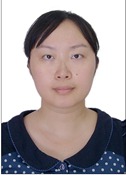Program Information
Imaging Dose and Cancer Risk in Image-Guided Radiotherapy of Cancers
L Zhou1*, S Bai2 , Y Zhang3 , J Deng4 , (1) Sichuan University, New Haven, CT, (2) Sichuan University, Chengdu, Sichuan, (3) Key laboratory of Carcinogenesis and Translational Research (Ministry of Ed, Beijing, Beijing, (4) Yale University, New Haven, CT
Presentations
SU-E-J-10 (Sunday, July 12, 2015) 3:00 PM - 6:00 PM Room: Exhibit Hall
Purpose:
To systematically evaluate imaging doses and cancer risks to organs-at-risk as a result of cumulative doses from various radiological imaging procedures in image-guided radiotherapy (IGRT) in a large cohort of cancer patients.
Methods:
With IRB approval, imaging procedures (computed tomography, kilo-voltage portal imaging, megavoltage portal imaging and kilo-voltage cone-beam computed tomography) of 4832 cancer patients treated during 4.5 years were collected with their gender, age and circumference. Correlations between patient's circumference and Monte Carlo simulated-organ dose were applied to estimate organ doses while the cancer risks were reported as 1+ERR using BEIR VII models.
Results:
80 cGy or more doses were deposited to brain, lungs and RBM in 273 patients (maximum 136, 278 and 267 cGy, respectively), due largely to repetitive imaging procedures and non-personalized imaging settings. Regardless of gender, relative cancer risk estimates for brain, lungs, and RBM were 3.4 (n = 55), 2.6 (n = 49), 1.8 (n = 25) for age group of 0-19; 1.2 (n = 87), 1.4 (n = 98), 1.3 (n = 51) for age group of 20-39; 1.0 (n = 457), 1.1 (n = 880), 1.8 (n=360) for age group of 40-59; 1.0 (n = 646), 1.1 (n = 1400), 2.3 (n = 716) for age group of 60-79 and 1.0 (n = 108),1.1 (n = 305),1.6 (n = 147) for age group of 80-99.
Conclusion:
The cumulative imaging doses and associated cancer risks from multi-imaging procedures were patient-specific and site-dependent, with up to 2.7 Gy imaging dose deposited to critical structures in some pediatric patients. The associated cancer risks in brain and lungs for children of age 0 to 19 were 2-3 times larger than those for adults. This study indicated a pressing need for personalized imaging protocol to maximize its clinical benefits while reducing associated cancer risks.
Funding Support, Disclosures, and Conflict of Interest: Sichuan University Scholarship
Contact Email:


